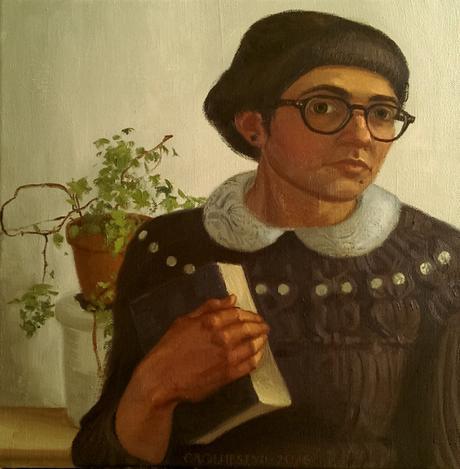
Selbstbildnis als Philosophin / Self portrait as philosopher (c) Samantha Groenestyn (oil on linen)
Painter virtues stray a little from those of ordinary people. I have been devotedly following in the footsteps of a very dear painter who perhaps doesn’t realize how firmly astute he is, how perfectly disciplined he is, how resolutely he holds onto the very virtues that divorce him somewhat from the rest of the world, but that render him as sharp and penetrating as a painter may be. He leads by example, by folding me into his tranquil space, and I lose the impulse to write, and succumb to the all-consuming desire to paint.
And I paint slowly, as I always have. When I retreat into the realm of vision, I permit myself to tread carefully, sagaciously, deliberately. There are many pauses, there is much stepping back, sitting down, daydreaming. As an unobtrusive presence in Ryan’s studio, since the early days, I observed that there is at least as much idleness as activity involved in painting. One must devote a lot of time to looking and evaluating. There is a moment when you realize you are able to paint much faster than you normally do. And then you realize that the slowness is an integral part of your work, making room for ordered thoughts. Rilke observed the same unhurried attention in Rodin, in his beautiful little book on the sculptor. ‘‘Man muß sich nicht eilen’, sagte Rodin den wenigen Freunden, die um ihn waren, wenn sie ihn drängten. (Rilke 1942: 14). ‘‘One mustn’t hurry,’ said Rodin to the few friends who were around him, if they pressed him.’
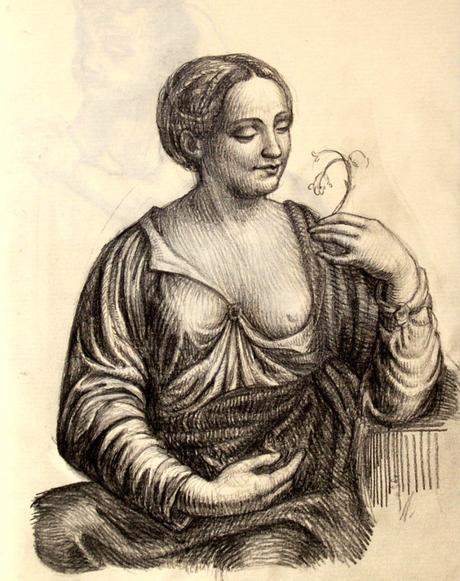
The breaks stretch out languidly as the afternoon sun yawns and stretches deep into my studio, and sometimes books steal my attention. And not even in a scholarly way, but in a guilty, indulgent way. This is the best kind of reading, and probably the deepest well of ideas. I think of Käthe Kollwitz with her Goethe, of both Delacroix and Rodin with their Dante. These writers who lodged deep inside the hearts of those painters and ever held the power to renew their weary minds and reinvigorate their work. It can hardly be surprising that Rilke, a poet, would apprentice himself to a sculptor, when that sculptor maintained a lifelong apprenticeship to a poet. Rilke (1942: 18-19) recounts of Rodin that ‘Er las viel. Man war gewohnt, ihn in Brüssels Straßen immer mit einem Buch in der Hand zu sehen, aber vielleicht war dieses Buch oft nur ein Vorwand für das Vertieftsein in sich selbst, in die ungeheuere Aufgabe, die ihm bevorstand.’ ‘He read a great deal. One was accustomed to seeing him in the streets of Brussels ever with a book in his hand, but perhaps this book was often only a front for being absorbed in himself, in the immense task hanging over him.’
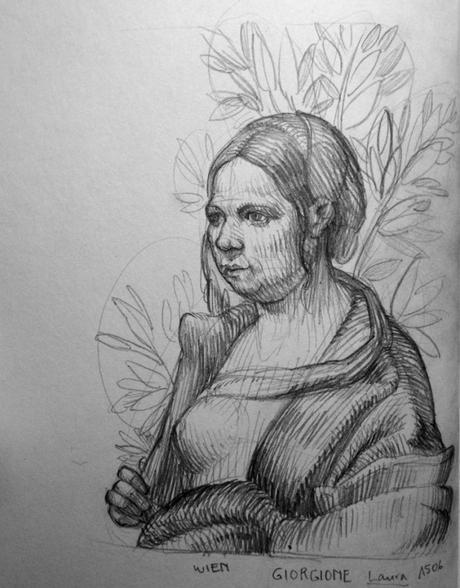
Rilke suggests that all this reading enables the reader to inhabit the ideas well before one turns to clay or paint or copper plate. Books that really awaken the mind and animate personalities, archetypes, heroes and monsters, do much of the work in our idle, daydreamy hours before we begin to work. Rodin’s mind was fertilised by Dante and Baudelaire: ‘Seit jenen Tagen blieben diese beiden Dichter ihm immer nah, er dachte über sie hinaus und kehrte zu ihnen zurück. … Später, als er als Schaffender diese Stoffkreise wieder berührte, da stiegen ihre Gestalten wie Erinnerungen aus seinem eigenen Leben, weh und wirklich, in ihm auf und gingen in sein Werk wie in eine Heimat ein’ (Rilke 1942: 20) ‘Since those days, both these poets remained ever near him, he also thought about them and returned to them. … Later, when he touched on this subject matter again as creator, their forms rose like memories out of his own life, painfully and truly, out from inside him and entering into his work as if into a home.’

In my mind I see Ryan as a figure deeply absorbed in his sketchbook. I never knew another person to love drawing as deeply as he does; I’ve never witnessed such simple and honest devotion to drawing. One can talk about drawing forever; Ryan disappears wordlessly into his sketchbook and enters another universe. Should the sea turn to paper, I fear it wouldn’t satiate his urge to draw. I’ve come to learn that only the act of drawing proves my love of it. And I’ve come to realize what an indispensible support this act is. How steadying it is, how each hatched line helps sift a thought until my head grows clear again. Drawing is an act that restores balance; to think of it merely as a preparatory work is to undermine the pivotal position it plays in our lives. Everything turns on it. It loosens the mind and weaves it back together in an orderly way. A visible amble across the page; a scribed daydream.
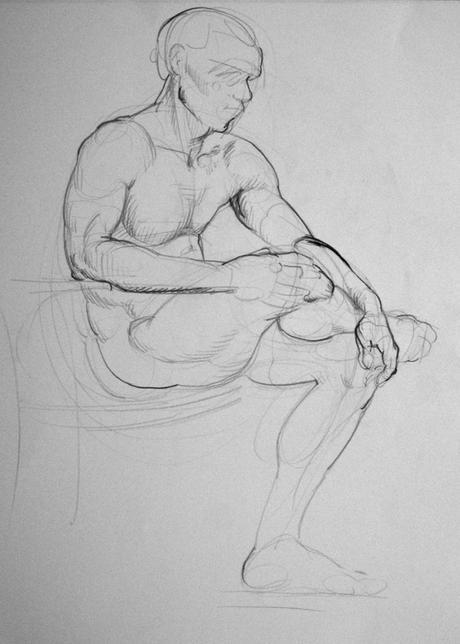
Again and again I defend the use of my time: time spent reading, drawing, looking is never wasted. The painter can never apologize for her idleness. She needs, above all, a clear head, and that clarity is only reachable with ample time and space to follow every thought without the pressure to produce. Our practices are often compared to—or sometimes explicitly linked with—meditation, but I think this is a false connection. The painter’s focused and penetrating dissection of the world, grounded in observation, carried by a heightened alertness, inescapably chases after meaning and order, not the sort of egoless abandonment of thought prized by meditation. The painter rather invites a thousand times the stimuli of an ordinary person, and takes the time to sift them for gold, reviewing them one by one, delighting in them, arranging them in meaningful ways.
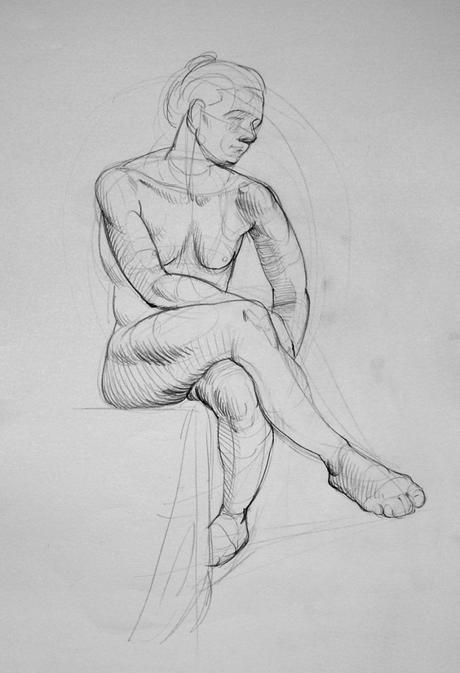
This delight cannot be overestimated. As I travel on long, winding roads through the Czech Republic, I indulge in the visual feast that unfolds—unfurling hills and forests and rivers melting in and out of each other, and the light that shifts in hue and angle as hours pile upon hours. I feel like I could explode when I see the blue-grey clouds against the golden sky in the mist of a light rain. I see that Ryan is equally absorbed in the neutral blue of the shadowy trees that back on to grass bathed in an unearthly yellow by the oblique evening sun. It’s then I realize what motivates us: we seek not to reproduce pleasant scenes, but to reproduce the staggering wonder at the visual relationships we stumble upon in the real world. Sometimes something as simple as the shocking harmony between two colours captivates us, and it is this delight that we are driven to transmit, more than anything else. ‘Look!’ we cry, stabbing our canvas with the brush, ‘Look how excellent the world is!’
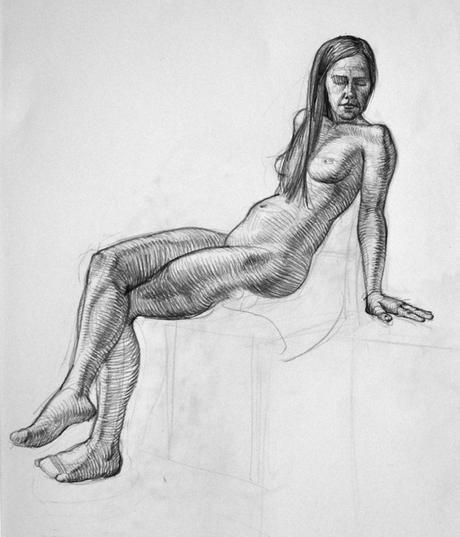
These small visual treats furnish us with small tasks, and that is also enough. Rilke (1942: 17) writes of Rodin that ‘Seine Kunst baute sich nicht auf eine große Idee auf, sondern auf eine kleine gewissenhafte Verwirklichung, auf das Erreichbare, auf ein Können.’ ‘His art did not build itself on a grand idea, but rather on a small, diligent attainment, on the achievable, on a ‘can.’’ The grandeur grows out of the mastery of the small things; the big ideas emerge from the tumble of small delights rolling together and gathering momentum. Ryan’s comments, as he devours every mark of my painting, always lean towards the subtle treatments that most people overlook. ‘This is so subtle’ has come to resound as the highest praise as he deftly picks out the intricate decisions that most captivated me as I worked.
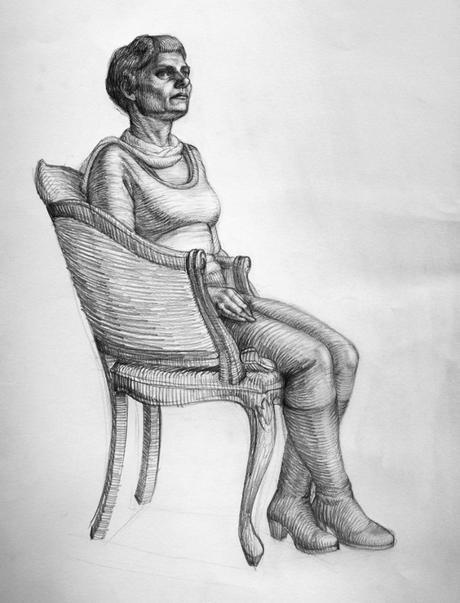
Our preoccupation with such small observations might make us feel we are getting left behind, that we are perpetual beginners, but this humility is the door to learning. Our inexpert trials and ill-conceived experiments, our genuine curiosity means many abortive paintings, some even dead-ends, as we try to instate order in our work. It can be lonely, and when people do speak with us, they miss the point of our efforts, they fail to see the driving impulse and the exploratory thread that weaves through our work. Rodin was rejected by the public for a long time, and when he emerged from his solitude, fully formed, he had already put himself through every test: ‘Jahre und Jahre ging Rodin auf den Wegen dieses Lebens als ein Lernender und Demütiger, der sich als Anfänger fühlte. Niemand wußte von seinen Versuchen, er hatte keinen Vertrauten und wenig Freunde’ (Rilke 1942: 18). ‘For years and years Rodin went along the roads of this life as a humble learner, as one who felt himself a beginner. No one knew of his attempts, he had no confidants and few friends.’ This is a double virtue: we can take our apprentice status and couple it with the sobering solitude that buys us more time to become. And the fruit of this lonely, self-testing time is an unshakeable confidence in ourselves, in our work, in every tiny detail of our approach. ‘Da, als man anfing, an ihm zu zweifeln, hatte er keinen Zweifel mehr an sich selbst. … In der Zeit, als er wurde, klang keine fremde Stimme zu ihm, kein Lob, das ihn hätte irre machen, kein Tadel, der ihn hätte verwirren können’ (Rilke 1942: 21). ‘Because, as one began to doubt him, he had no more doubt in himself. … In the time when he was becoming, no foreign voice sounded about him, no praise that would have led him into error, no reproach that could have confused him.’
We cannot forget the point of our painterly values, so at odds with the world of outcomes and products and services and profits and efficiency. As with any virtue ethics, we chase after excellence. Excellence as humans and excellence in our work. However we exist in the world and whatever we leave behind in it, let’s hope that everything glows with that unmistakeable sheen. I smile with satisfaction when I hear Ryan say again and again, ‘I’m sorry it’s not perfect.’ We will slow down and look and consider and try again until it is.
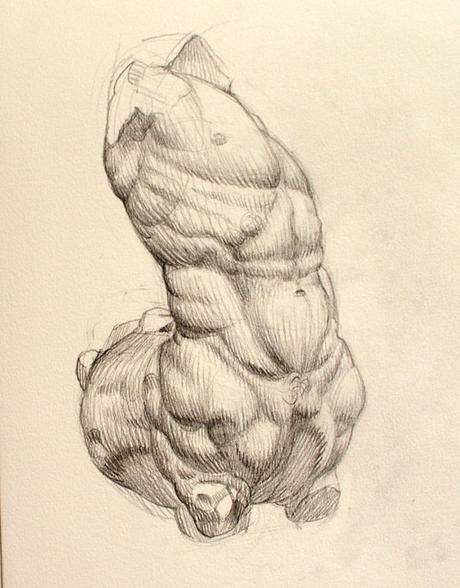
Rilke, Rainer Maria. 1942. Auguste Rodin. Leipzig: Insel.

